Customer retention is more valuable than customer acquisition.
Some people say it costs five times as much to earn a new customer than it does to retain an existing one. Others say that retaining customers is seven times more valuable. And finally: “Acquiring a new customer is anywhere from five to 25 times more expensive than retaining an existing one.”
Okay, so perhaps the exact numbers are a little fuzzy. The point, though, is that customer retention is cheaper, more profitable, and in lots of ways easier than customer acquisition.
In this article, we’ll answer:
- What does customer retention mean?
- What are some proven customer retention strategies?
- Which automation apps improve retention?
Shall we?



What is Customer Retention? Customer Retention Definition

Customer retention, or client retention, is the process of turning one-time buyers into repeat customers.
→ Click Here to Launch Your Online Business with Shopify
The word “retention” stems from retain, and retain is basically just a fancy way of saying keep.
So, the goal of customer retention is to keep your existing customers.
The goals and methods of retaining customers vary by industry: A company that sells high-end software will have different customer retention strategies than an ecommerce store.
But for all sectors, the idea is to provide a level of quality and service that keeps people coming back – customer retention perfected.
What Are Customer Retention Programs?
Customer retention programs are simply activities and tactics brands take to improve the customer experience.
The objective of these programs is to encourage customers to repurchase while also advocating for the brand’s product or service.
Customer retention programs can take several forms, but we’ll keep it to tactics that are designed for ecommerce store owners like you.
Let’s dive into some of the customer retention tactics thatwill give your customers the incentive, opportunity, and desire to come back to your store for another purchase.
Why Is Customer Retention Important?
Aside from the fact that it’s more expensive to acquire new customers than it is to keep existing customers, there are many other reasons that customer retention is important.
Returning customers are 50 percent more likely to purchase from you than a new customer, and they tend to spend about 33 percent more. So not only is it less expensive to keep your customers, but it’s actually more profitable in the long run.
Retained customers can also help reduce your marketing costs. Sure, happy customers are return customers, but they also tell their family and friends about you. Word of mouth advertising drives more sales than paid advertising, up to five times more.
The trust you get from your happy customers will drive more sales, decrease your advertising costs, and save you money.
You don’t want to be that flash-in-the-pan startup. You want real, organic growth that ensures future revenue.
Benefits Of Customer Retention
Here’s a quick rundown of the benefits you’ll see from implementing retention strategies for customers:
- A five percent increase in retention rate will increase profits by 25-95 percent, according to Harvard.
- Builds brand awareness and reputation by word-of-mouth advertising from your loyal customers.
- Gives you the opportunity to build constructive relationships with your customers.
- Allows you to identify and fix flaws by receiving feedback and listening to your customers’ needs.
- Loyal customers are more willing to try or experiment with your new products. Six times more likely, according to studies.
- Your customers are more willing to be forgiving of mistakes if they feel loyal to you, which means fewer of those fly-off-the-handle angry customers.
Customer Retention Metrics And How To Calculate It

Before you start creating a customer retention plan, you need to know and understand your current customer retention rate. This number tells you the percentage of customers that are sticking around.
Your customer retention rate is easy to calculate with the following equation:
((Number of customers at the end of a period – number of customers acquired during that period) / number of customers at the beginning of the period) X 100 = Customer retention rate
Let’s break it down.
First, define the period. The time frame is completely up to you – it could be monthly, quarterly, yearly, or whatever works best for you and your business.
Keep in mind that when calculating the number of customers at the end of the period, you have to take customer churn into account.
For example: You have 10,000 customers at the beginning of the period. You acquired 5,500 new customers during that time, but lost 2,500 due to churn. That means that at the end of the period you have 13,000 customers.
The equation would look like this:
((13,000 – 5,500) / 10,000) X 100 = 75
Customer Retention Rate = 75%
Why is this number so important? It tells you how well you’re able to keep your customers coming back for more. For a benchmark, it’s been reported that a 35 percent or higher retention rate in the ecommerce or SaaS industries means you’re doing really well.
How to Improve Customer Retention: 10 Best Practices
There are a lot of ways to carry out customer retention marketing. From interacting on social media, email marketing, and setting realistic expectations, here are the best practices for increasing your customer retention rate.
1. Set Realistic Expectations
Setting realistic expectations is so important if you’re trying to improve your customer retention rate – it can have a huge impact on your business’ ability to keep customers.
Think about things like shipping times, for example. Most online stores can’t compete with Amazon when it comes to shipping times. But, what you can do instead is work hard to keep your customers informed.
Suppose you have a customer who orders something and then has to wait a few weeks for it to show up. This can go one of two ways:
- They have no idea how long shipping will take, and they become increasingly more annoyed every day that their package doesn’t arrive.
- They knew from the beginning that it would take a little while, so the two-week wait is in line with their expectations, so it’s really no problem at all.
If the goal is to retain customers, we want to make sure that we’re creating this second scenario.
And there are lots of ways to do it with simple customer retention strategies.
You can have transparent shipping information on your website. You can send emails to customers telling them that their order was received; that their order was processed; and that their item has shipped.
You can customize the updates you send to your customers with a few clicks in the Shopify backend:
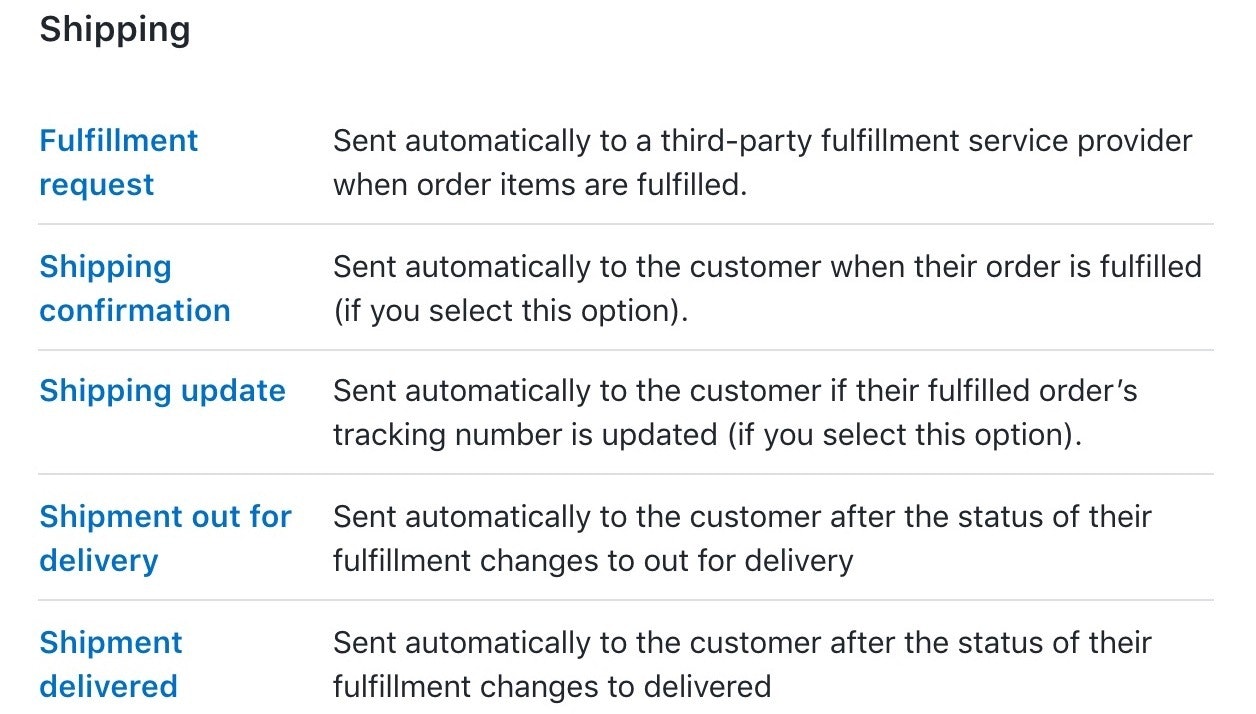
Of course, setting expectations goes way beyond shipping.
Make sure your product descriptions are accurate. Make sure there aren’t surprise fees that appear at checkout. Setting clear expectations is a basic, but huge, step forward, and will go a long way when you’re trying to improve your customer retention rates.
2. Create a Loyalty Program
A customer loyalty program should be an integral part of your customer retention system. These programs reward your customers by giving them incentives to come back and shop with you.
Once your customers opt into your loyalty program, make them feel special by hooking them up with offers: Give them a sneak peek at new products, and offer exclusive deals. This royal treatment will help your customers to feel valued, and is the crux of this customer retention strategy.
One of the best customer retention examples based on this tactic is Sephora’s program, called Beauty Insider. This program gives access to discounts and gifts without actually having to spend any money. However, the more money you spend with them, the better the perks.
You can even give someone loyalty program-esque benefits before they have opted in. For example, you can offer each buyer a discount code inside of their order confirmation email.
Don’t make them sign up for anything – just get them the discount straightaway.
If you offer your customers value without any cloaked agendas after they’ve made a purchase, it’ll go a long way to improve customer loyalty and retention.
Shopify lets you tailor your order confirmation emails and create discount codes to bolster customer retention.
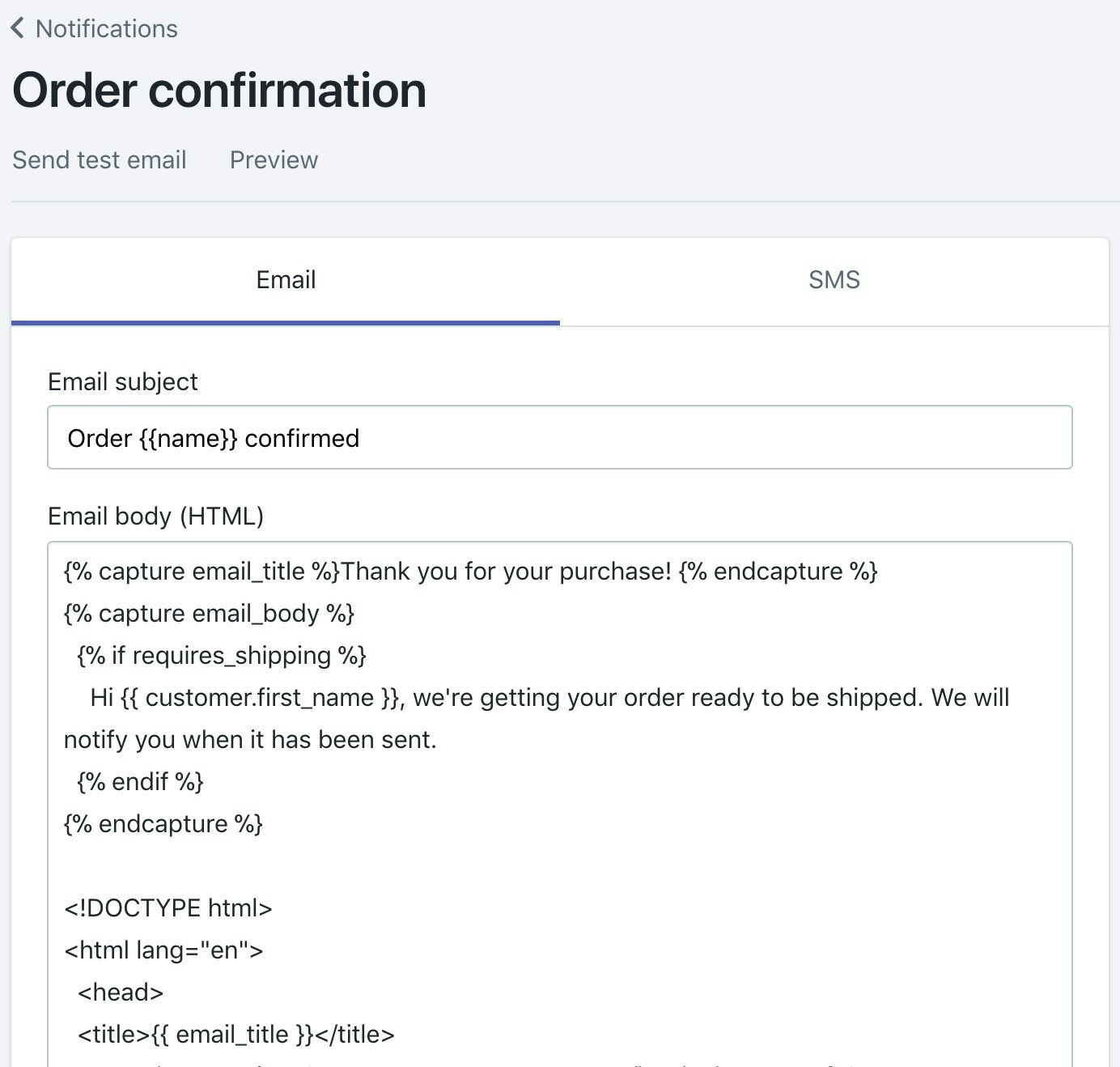

3. Pay Attention to Questions
You know how you sometimes need an extra set of eyes to edit because it’s impossible to spot your own typos?
The same thing can happen with your store: You designed the customer journey, you built the product pages, you set the prices. In short, you understand everything about your store because you’re the one who invented it.
Which is exactly why we can’t always see what we did wrong. At least not as well as our customers can.
Paying attention to questions about your store is a great way to keep your customers, and a simple customer retention technique.
For example, if someone asks a question that you thought was obvious, that’s your clue that maybe it isn’t actually so obvious.
Or if they ask a question that you already explained, then maybe you didn’t explain it clearly enough or loudly enough.
Make customers feel comfortable enough to ask questions. The more comfortable they feel, the higher your customer retention will be.
Plus, it’s like they say – feedback is a gift.
So listen to those questions and remember that if one person is asking it, others might be as well.
And listening is a great way to improve customer retention – if you know what the problems are, you’ll have a much better chance to fix them.
4. Pay Attention to Complaints
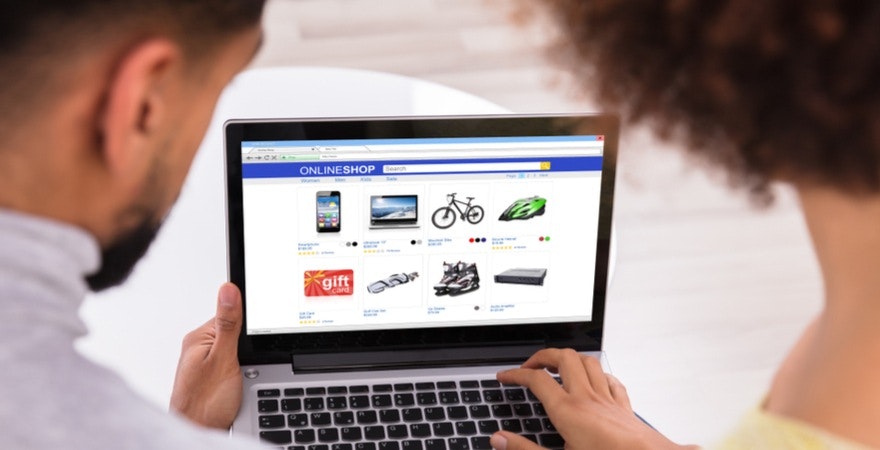
The reality is: customer retention depends on customer satisfaction.
If your customers are unhappy with the service that you provide, why would they come back for a second visit?
This means that every complaint you receive is like a mini customer satisfaction survey, so make sure that you use them to improve your customer retention rates.
Essentially, if you get a complaint, don’t ignore it. It’s best practice to take care of it as soon as possible and make sure you satisfy your customer’s needs.
You could even take steps to make it simpler for customers to submit complaints. Put a Contact page on your website, throw your email into the footer, and make sure that you’re available on social media.
Use insights from customer complaints to make the next customer’s experience better.
5. Be Active on Social
If your customers forget about you, you can’t retain them. And there are few better ways to stay top of mind than engaging with customers on social media.
If social is going to be part of your customer retention strategy – and it should be! – then bake it into the customer journey. Put social buttons in your footer, on your checkout page, on your contact page. Everywhere. There’s a reason why Shopify makes it so easy to add social media elements to your store:
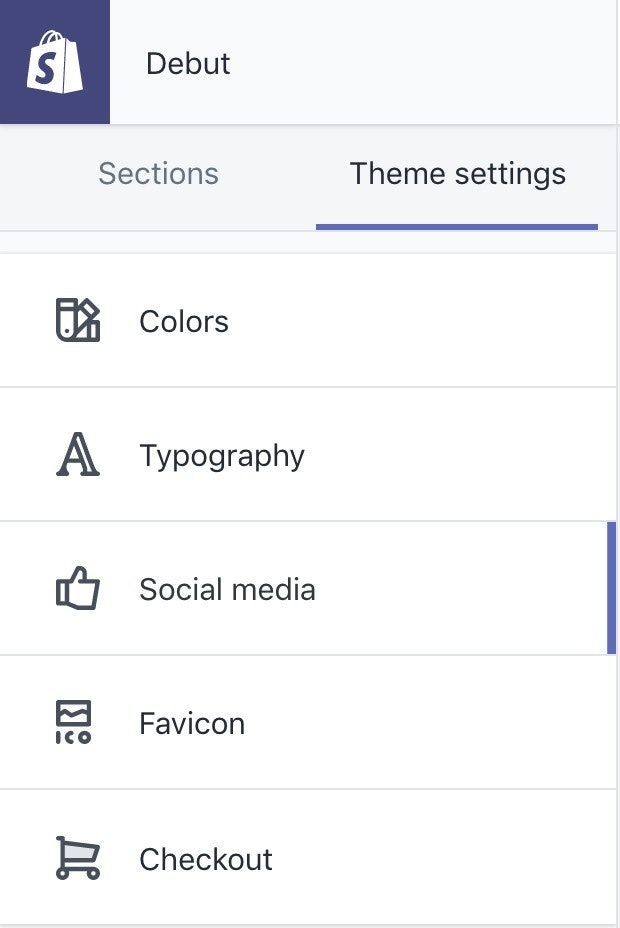
When customers compliment your store on social, thank them for the kind words and then share their love with the rest of your followers – this is a great customer retention strategy.
You can also improve your customer retention rates by announcing new products, deals, and other updates on social. That’s a great way to generate buzz around your social channels. Here, for instance, is an email from ecommerce bra shop Harper Wilde.
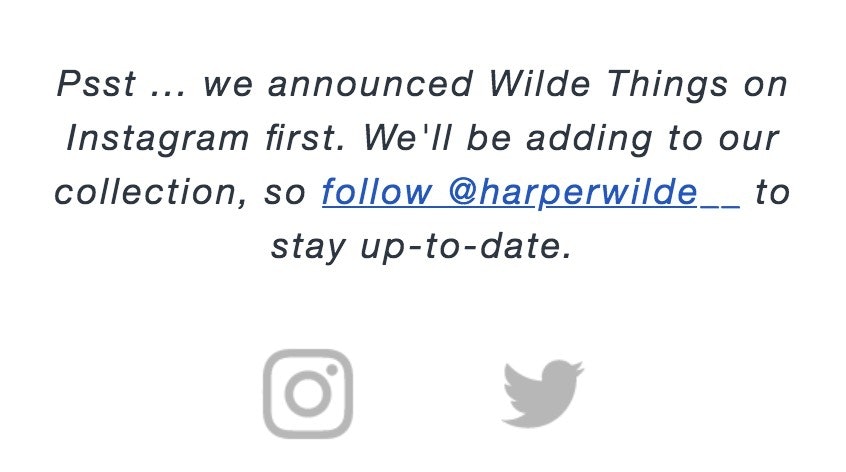
There are loads of apps you can use to automate and optimize your social media engagement, and creating a social media marketing plan is pretty easy. (Check out the social media apps on the Shopify App Store for details and links.)
You can even put your social buttons in your emails.
6. Target Customers on Social
Social media can help with customer retention by letting you target past buyers. With Facebook and Instagram, for instance, you can create target audiences based on pages that customers visited – like, say, a “Thank you” page after making a purchase – or on certain events.

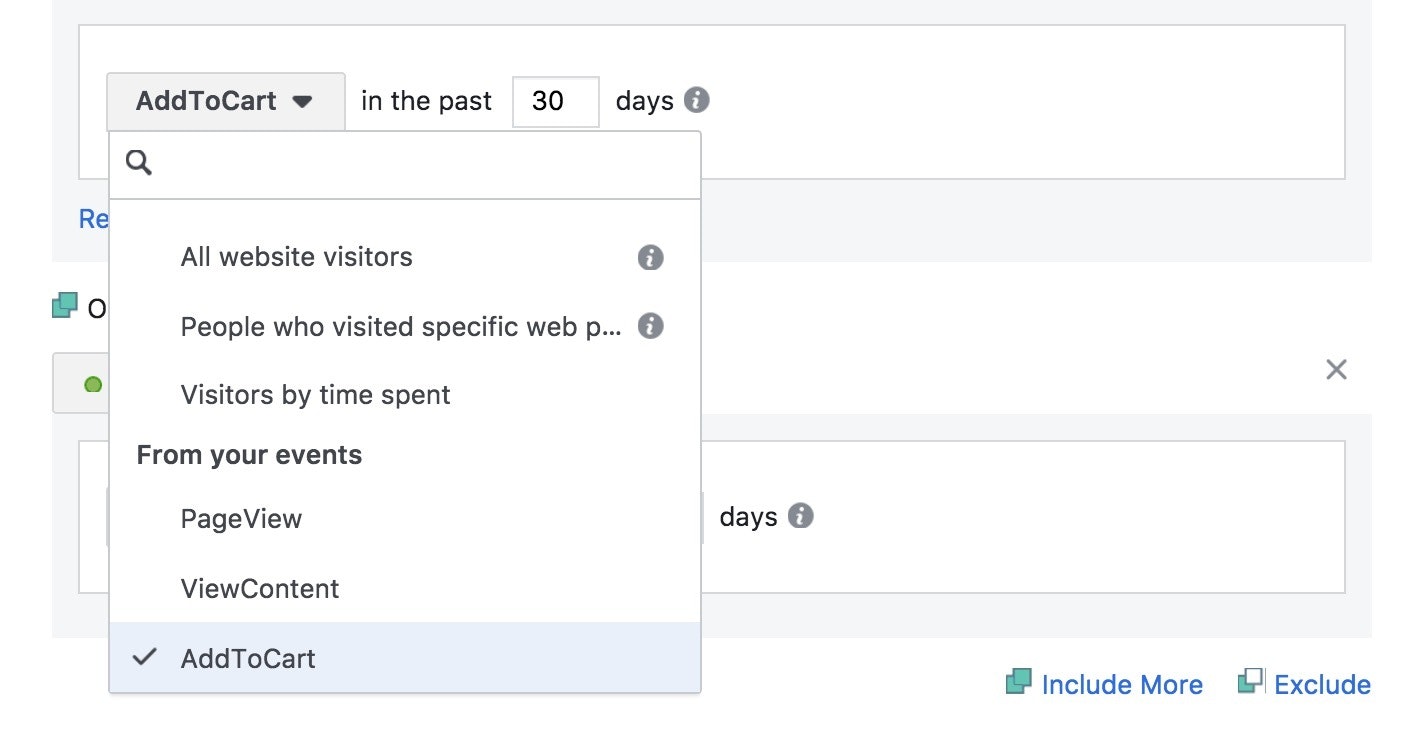
When it comes to customer acquisition, so much of the targeting that online store owners do on Facebook is guesswork, at least initially.
They’re educated guesses though, at least, which are based on locations, or age groups, or interests, or gender.
But when you use social media to target past customers, it removes the guesswork.
You know the people on the receiving end of these ads made purchases on your site, making social targeting a valuable tool for your customer retention strategy.
So give this tactic a try – we’re sure that you’ll see the importance of customer retention if you can generate some results.
7. Use Email
Each email you send can aid customer retention — even when you’re sending emails that aren’t really about retaining customers.
We talked earlier about how important setting expectations is. Well, every email can be part of that process. The order confirmation, the shipment-sent confirmation, the follow-up thank you.
These are great opportunities that you can use to set expectations, engage customers, and increase your customer retention rate.
Once your customers become email subscribers, you can use segmentation. For example, you could create segments based on the specific products that customers purchased, how much they spent, whether they used a discount code, and so on.
It seems like email is becoming less popular, at least among certain demographics. But that’s not necessarily a bad thing for your customer retention strategy.
As personal communication keeps moving to iMessage, Facebook Messenger, Snapchat, and WhatsApp, emails might become less intrusive: They won’t be competing for real estate with messages from friends and family.
That means your emails will have a higher chance of helping you hit your goals, and if they’re done right you’ll be able to improve customer loyalty and retention.
8. Market to Your Customer’s Interests
Whenever we talk about customer retention, one thing is clear – your marketing materials must be aligned with your customer’s interests.
Why?
Well, if you’re looking to improve your customer retention rate, you’re not going to do that by sending your existing customers emails which have nothing to do with the things which initially drew them to your business.
Or, if you’re thinking about trying out some new content on your social media channels, it’s important that you assess why your followers liked your content in the first place. Is the new content that you want to post going to jeopardize that existing relationship?
These are risks which you may need to take on your entrepreneurial journey, but make sure that they’re calculated risks. When it comes to customer retention strategies, sticking with what your customers know, not what you know, is generally a good policy to stick with.
9. Engage in Social Responsibility

As we’ve mentioned before, high customer retention rates hinge on your buyers feeling good – not only about the products that they’ve purchased from you, but also with the full shopping experience.
That includes price, quality, communication, and so on.
But you can also make customers feel good by letting them know that they are doing good. This is where social responsibility can have an impact.
Social responsibility refers to activities that help people in need. And lots of online stores do a brilliant job of incorporating social responsibility into their business – and letting customers know about it.
You may be familiar with Patagonia, the outdoor clothing company. Patagonia operates several programs that make their customers feel like they’re making a difference, just by purchasing the brand. These programs include Worn Wear for garment repair and recycling, Patagonia Action Works for supporting grassroots activists, and they also provide environmental grants.
Talk about building brand loyalty while increasing your retention – if you’re seen as a brand that’s doing good for the world, it’s a lot easier for your customers to back you.
After all, when your customers know that every item they buy will help a good cause, you’re giving them an incentive that goes way beyond reliable shipping.
10. Be Honest
Our final customer retention strategy is a simple one, and it’s one which you’ve probably been taught throughout your whole life.
Be honest. It’s as simple as that.
It might sound a little vague at first, but there are a lot of people out there who have been burned by businesses before.
Whether that be through faulty products, confusing returns policies, unknown charges, or something else, people are quick to lose trust nowadays.
So make sure that you provide your customers with an honest experience when they’re shopping from you.
Offer fair prices for your products and for your shipping rates. Be clear with which shipping company you’re going to use and remember to add your tracking numbers.
Don’t try to bump your prices too high initially. Nothing will make your customers skeptical more than an unwarranted high price tag.
All in all, try to treat your customers how you want to be treated – this is one of the best ways to improve customer retention rates for businesses of all shapes and sizes.
Customer Retention Tools
Alright, not all ten of our customer retention tips can be automated with apps.
There is, for example, no app for social responsibility, or for setting clear expectations – you’ll need to manage those customer retention strategies yourself.
That said, lots of the nitty-gritty work involved can be automated. Here are some apps that could give your customer retention strategy a boost.
(Note: There are many, many more apps than these. Think of this list as an automation appetizer.)
Customer Relationship Management Software
Bobile interacts autonomously with your customers, and helps you foster a relationship with your customers so that you don’t have to spend the time doing so. You’re able to advertise sales, provide loyalty programs, give unique offers, get feedback, among many other features.
Qualtrics is a customer churn and retention software that helps you monitor and respond to all aspects of the customer journey. It even helps you predict churn.
Zoho is smart software that learns as you use it. It can do anything from managing your email campaigns to predictions through trends to automating recurring tasks.
Loyalty program apps
S Loyalty lets you launch a branded loyalty program. You can choose the rewards you offer, including price discounts, free shipping, and more.
Smile.io grants loyalty points, encourages word-of-mouth marketing with a referral program, and has a rewards structure to make your most valuable customers feel special.
Retentio has lots of features to help with customer retention, including a discount coupon on the thank you page and discounts that are automatically applied to customers’ baskets.
Social media apps
Instagram Shop specializes in shoppable Instagram posts, letting people buy products that appear in your Instagram feed.
Auto Post automatically authors posts about your products, including new products that you only recently added to your store.
Kudobuzz can aggregate and display social testimonials from your customers on Instagram, Facebook, Twitter, and more.
Email apps
Spin-a-Sale is an innovative way to collect email addresses. It works by firing a game-like popup when visitors are leaving and offers a discount if they punch in their email address. They get a discount, you get a bigger email list.
Happy Email sends automated thank you messages to new customers 30 minutes after their first purchase.
Summary: How to Retain Customers in 2021
Many ecommerce entrepreneurs focus on attracting new customers, and while you need new customers, it’s just as important to nurture your existing base.
So rather than gearing all your marketing budget towards acquiring new customers, put some effort and money into building relationships with past buyers. These people already know your brand and will appreciate that you’re focusing on them even after they’ve made a purchase.
You might even get repeat business! Here are the 10 best customer retention tactics that you can implement to keep buyers around.
- Set realistic expectations early.
- Develop a loyalty program.
- Pay attention to customers’ questions.
- Dig into the complaints.
- Be active on social networks.
- Target past customers based on their activity.
- Use email to nurture relationships.
- Market to customers’ interests.
- Engage in social responsibility.
- Be honest and transparent.
Which of these customer retention strategies are you currently using? Let us know in the comments section below.






